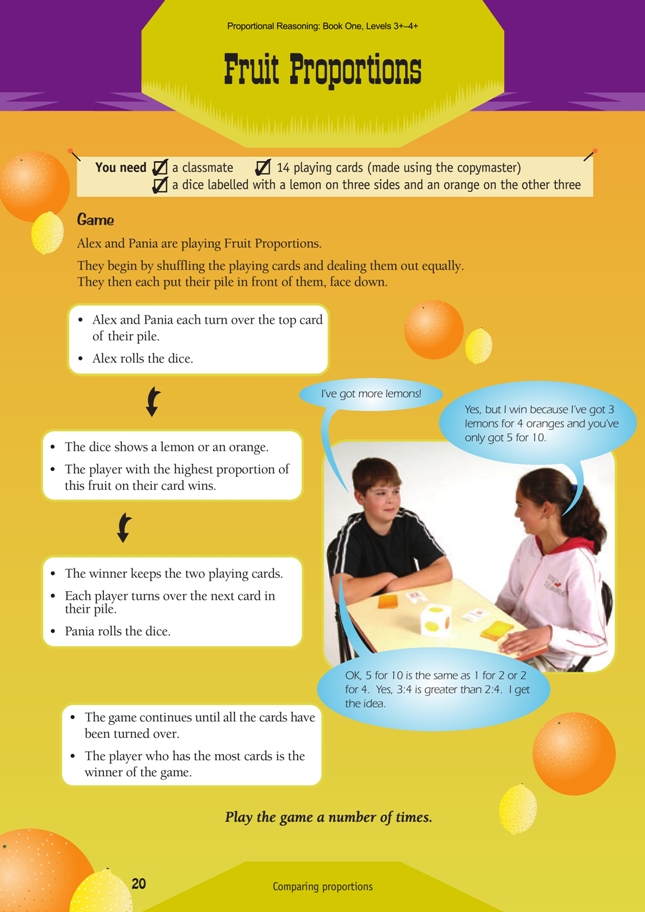This is a level 5 number activity from the Figure It Out series. It relates to Stage 8 of the Number Framework.
A PDF of the student activity is included.
Click on the image to enlarge it. Click again to close. Download PDF (595 KB)
compare proportions
Number Framework Links
Use this activity to:
• help students consolidate and apply their knowledge of equivalent fractions (stage 8)
• develop confidence in students who are beginning to use advanced proportional strategies (stage 8).
14 playings cards (made using the copymaster)
A classmate
FIO, Level 3-4+, Proportional Reasoning, Book One, Fruit Proportions, pages 20
Organise the playing cards and the dice. You will need a set of cards and a dice for each pair of students. Use 2 cm wooden or plastic cubes marked with yellow and orange permanent markers. Alternatively, use standard numbered dice and specify that even numbers represent lemons and odd numbers represent oranges.
To play this game, students need to understand how to compare two proportions or ratios. The speech bubbles model one way to do this. The key is to match numbers for one of the two fruits. Alex sees that 5:10 is equivalent to 1:2. But there are 4 oranges on Pania’s card, so he finds another equivalent, 2:4, that will give him a match on the oranges. He can now compare 2:4 with 3:4 and see that Pania’s card has the highest proportion of lemons (more lemons for the same number of oranges). For an activity that explores this method (“cloning”), see Flavoursome
(Proportional Reasoning: Book Two, levels 3–4+, pages 6–7.)
A second way to compare the ratios is to first express them as fractions. In the scenario that introduces the game, the dice shows a lemon, so the winner is the player with the highest proportion of lemons. Lemons make up 5 of the 15 fruit on Alex’s card (5/15 ). They make up 3 of the 7 fruiton Pania’s card (3/7 ). Which is greater: 5/15 or 3/7? Alex and Pania may see intuitively that 3/7 is more than 1/3, but they can prove that this is true using equivalent fractions with a common denominator:
1/3 x 7/7 = 7/21 and 3/7 x 3/3 = 9/21, so Pania has the highest proportion of lemons.
Each pair of students should play the game a number of times. They may need teacher help at first, as they learn strategies. They may also need a pencil and paper handy. They should practise using both strategies described above.
Confident students will be able to use this game for independent skills maintenance while you work with a guided teaching group.
Answers to Activity
Game
A game for comparing proportions
